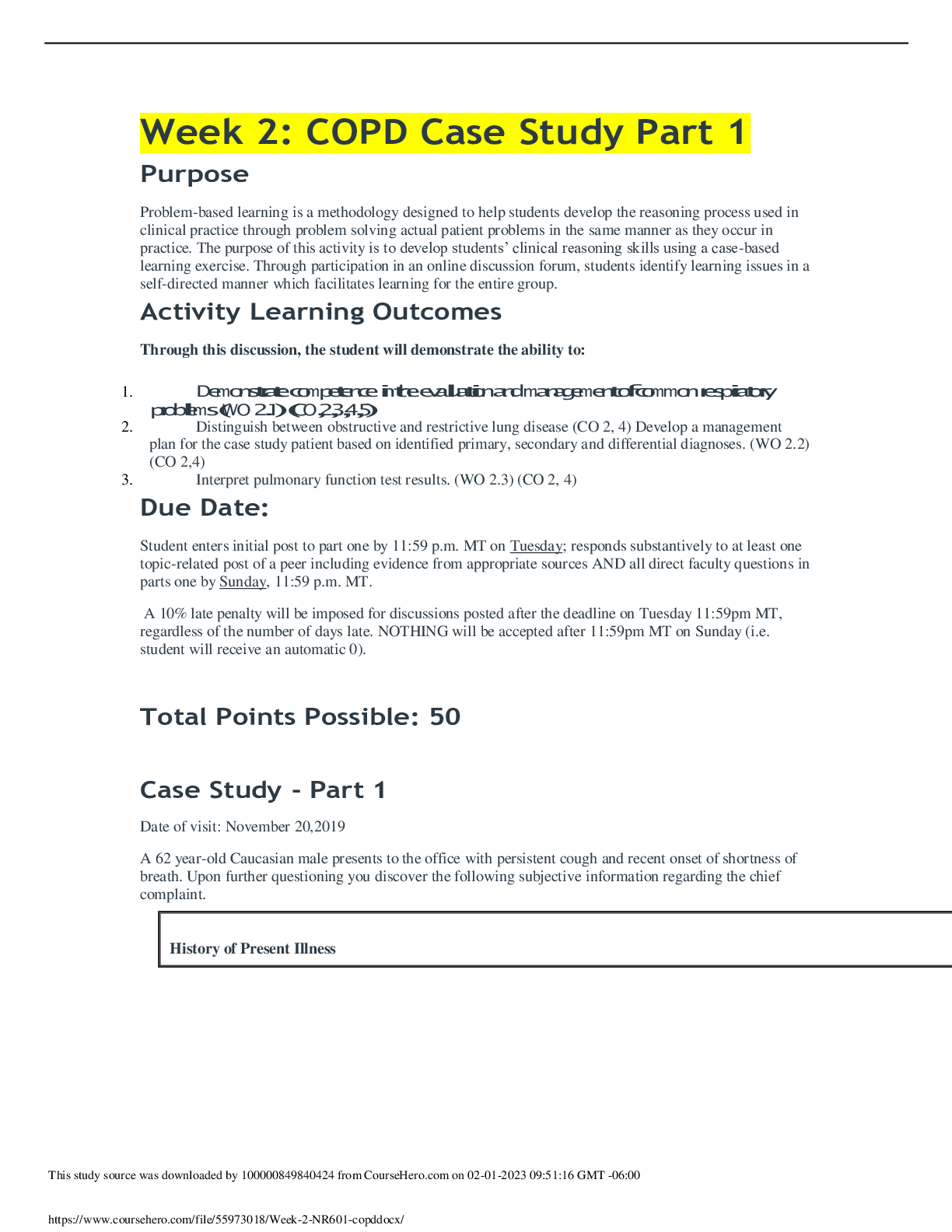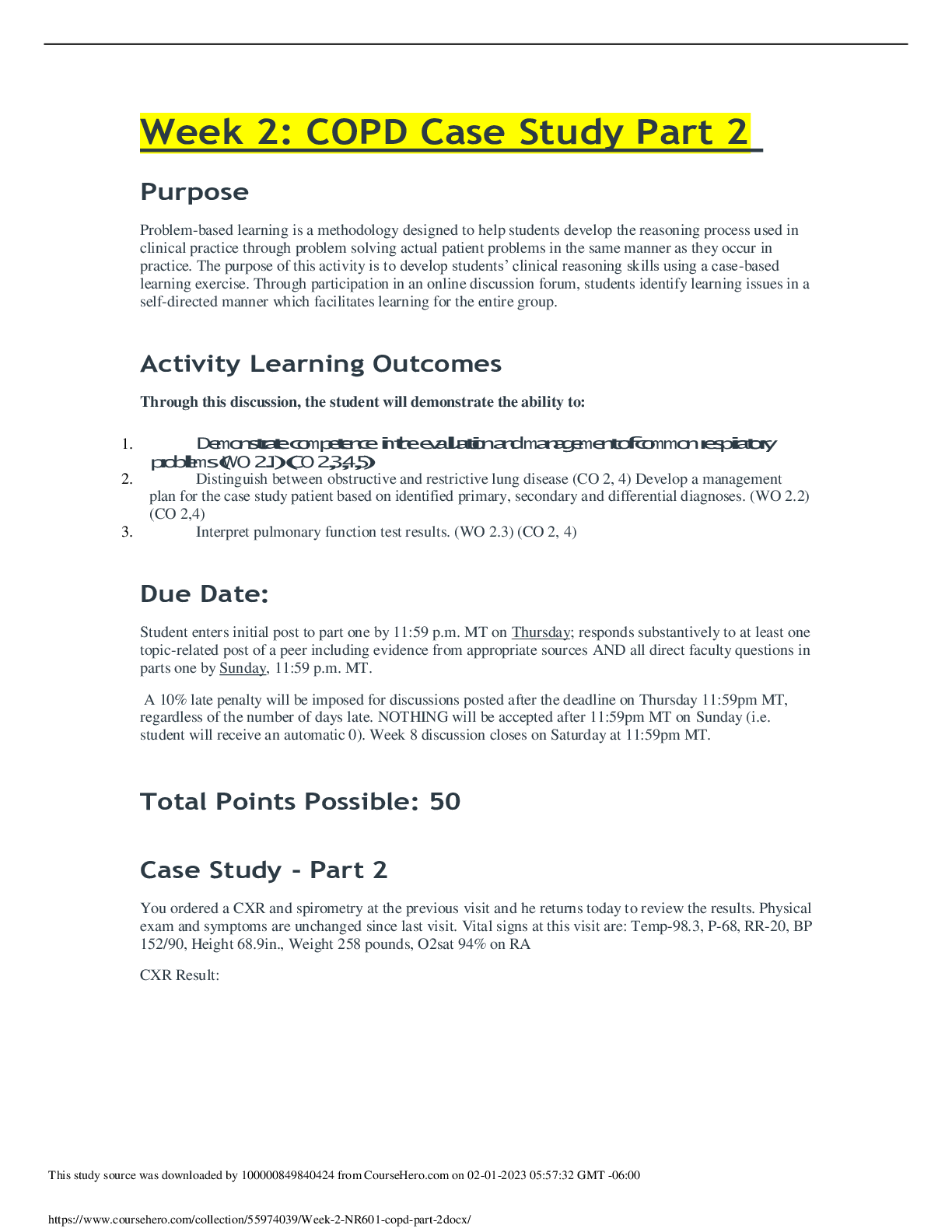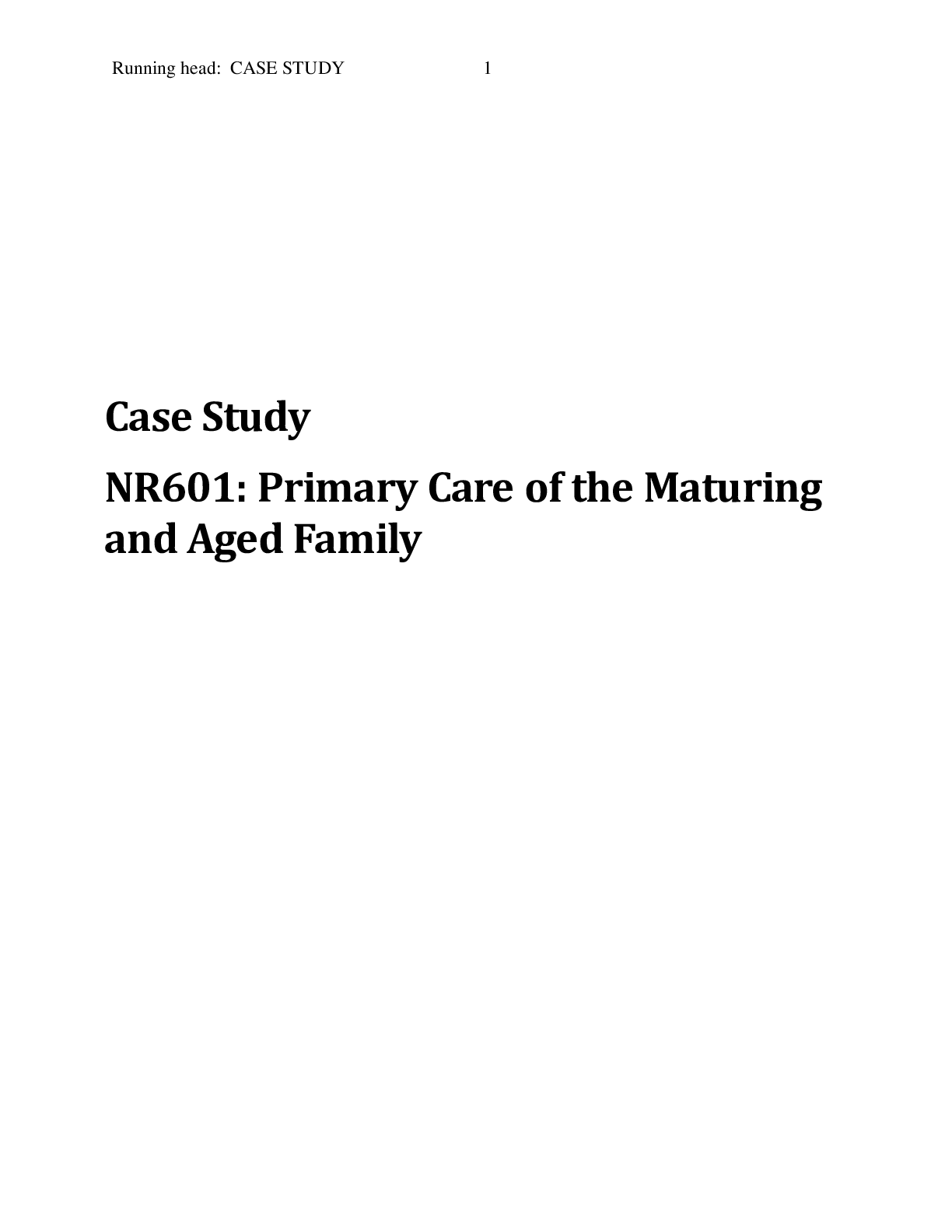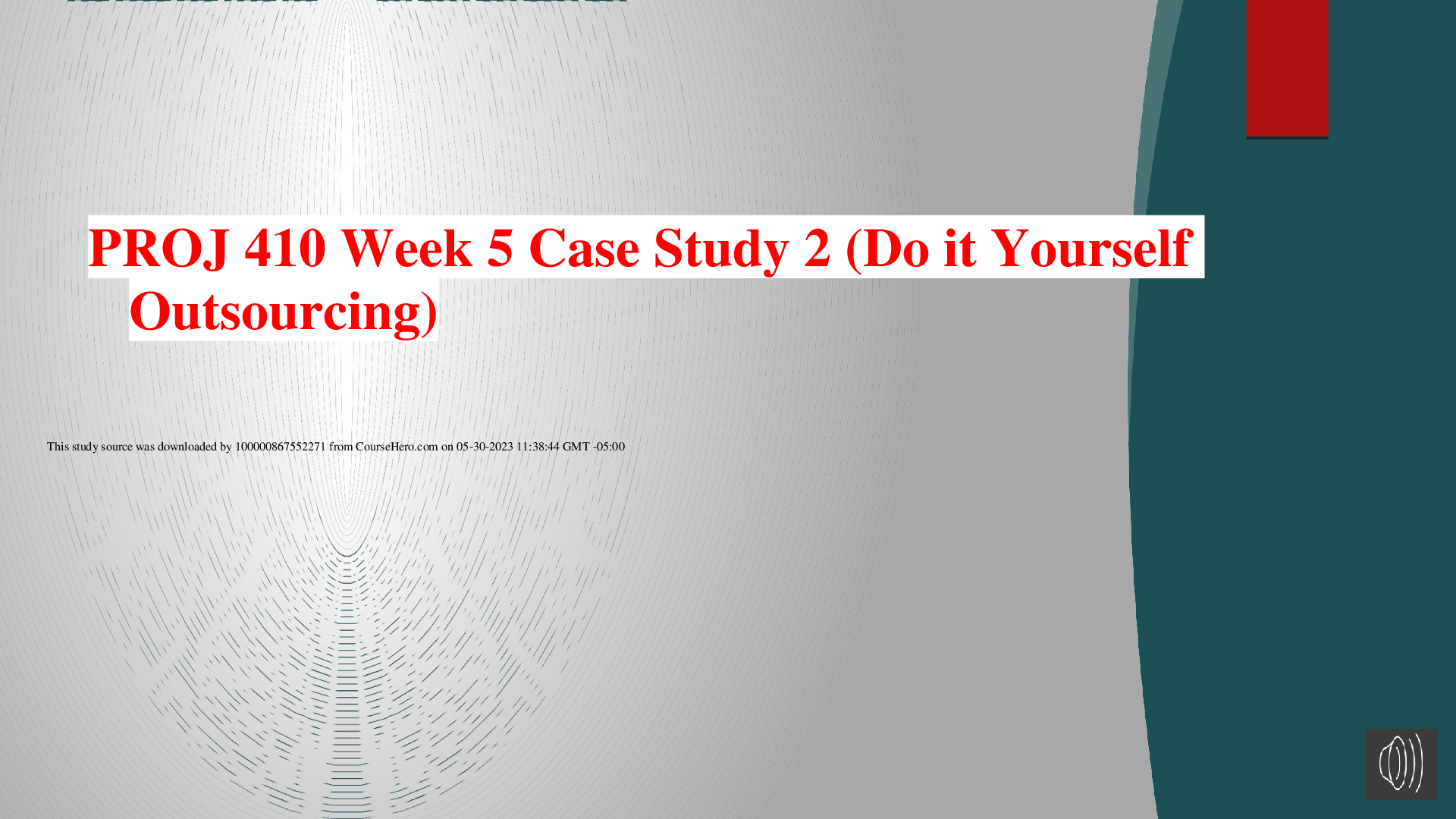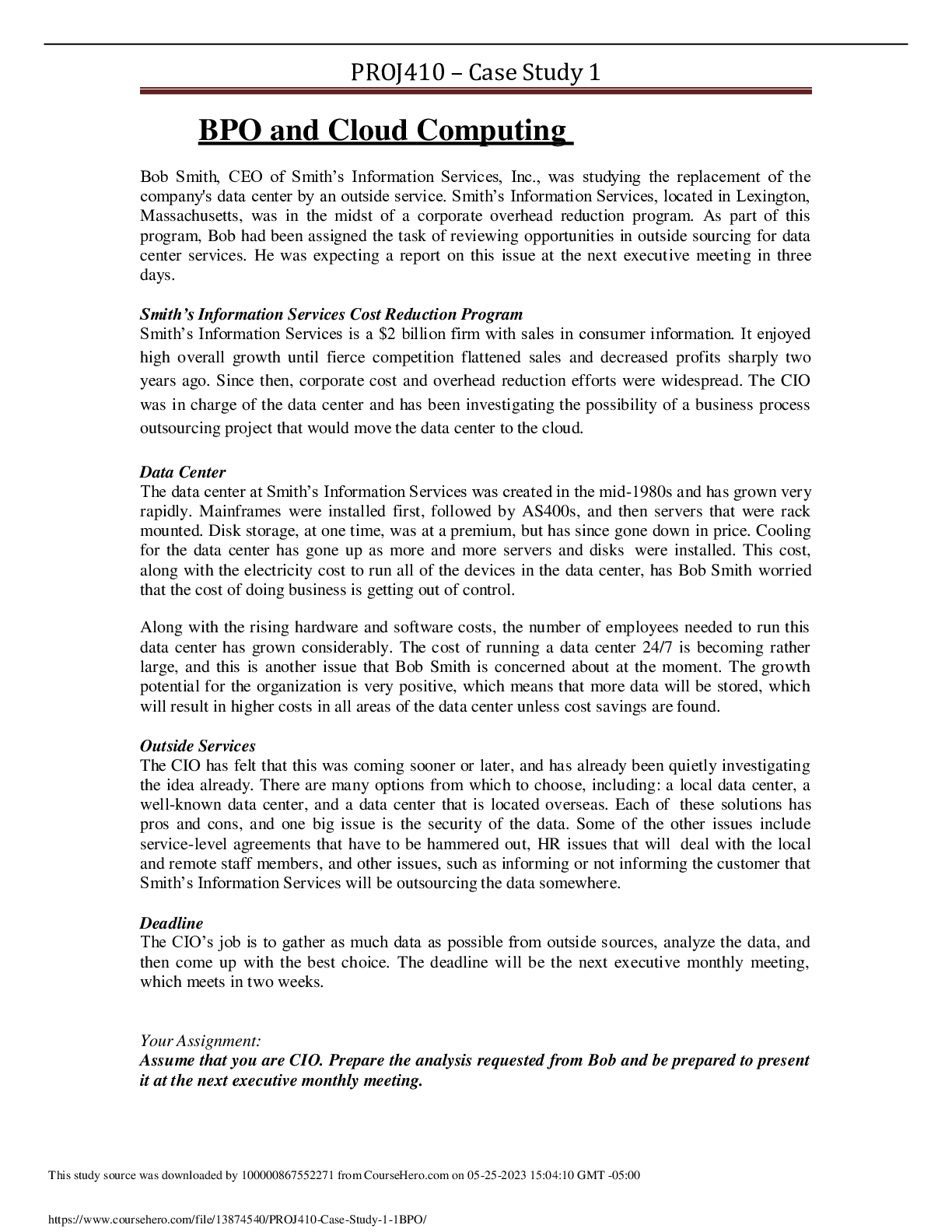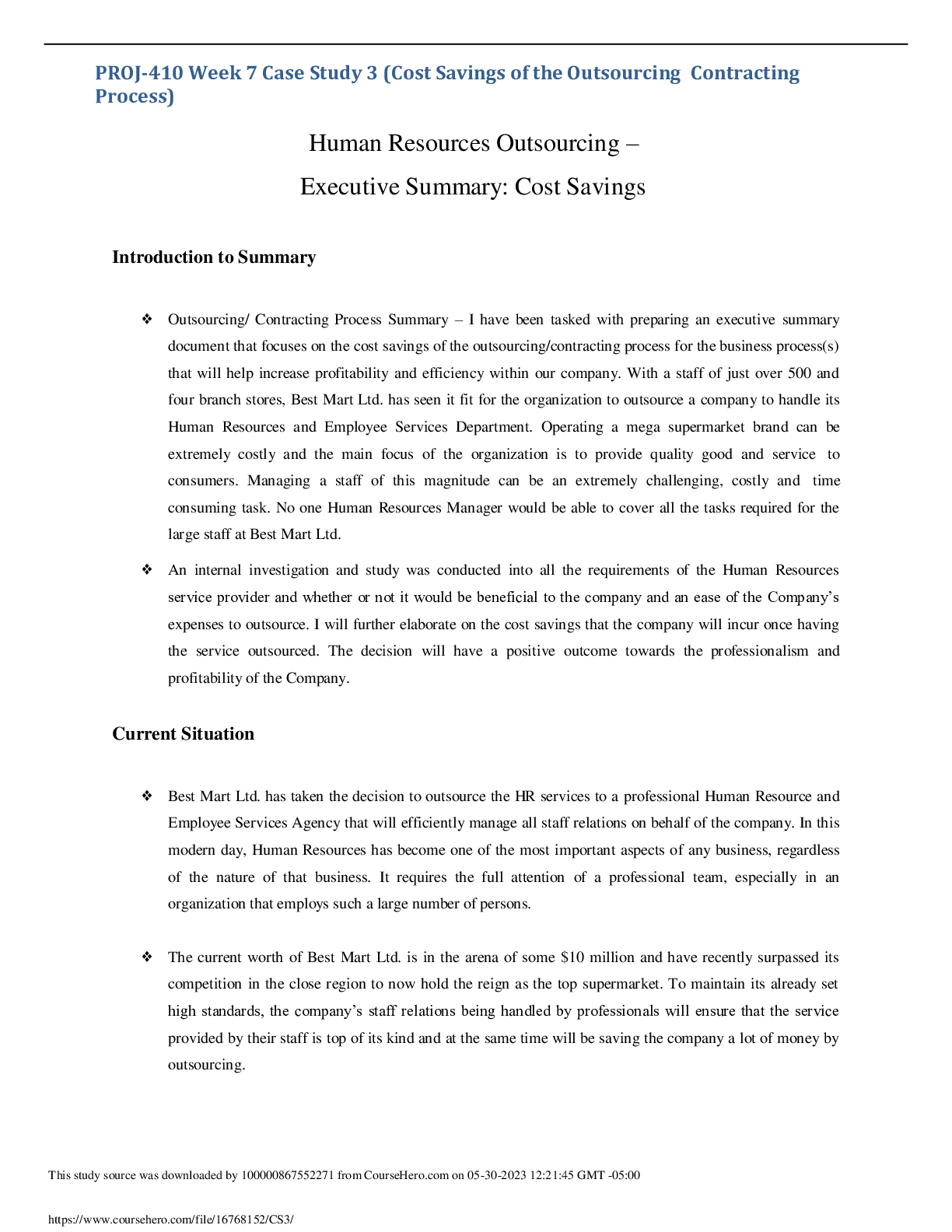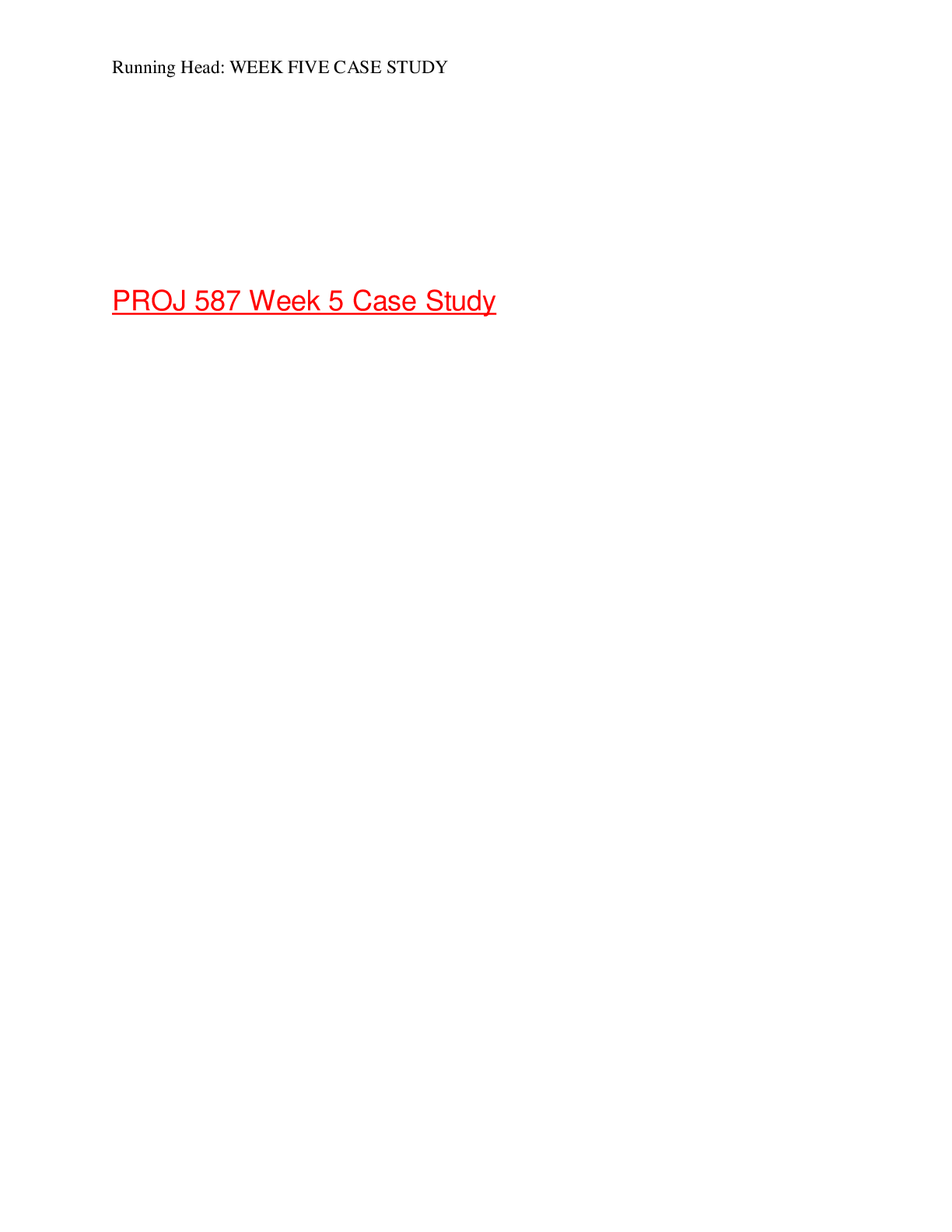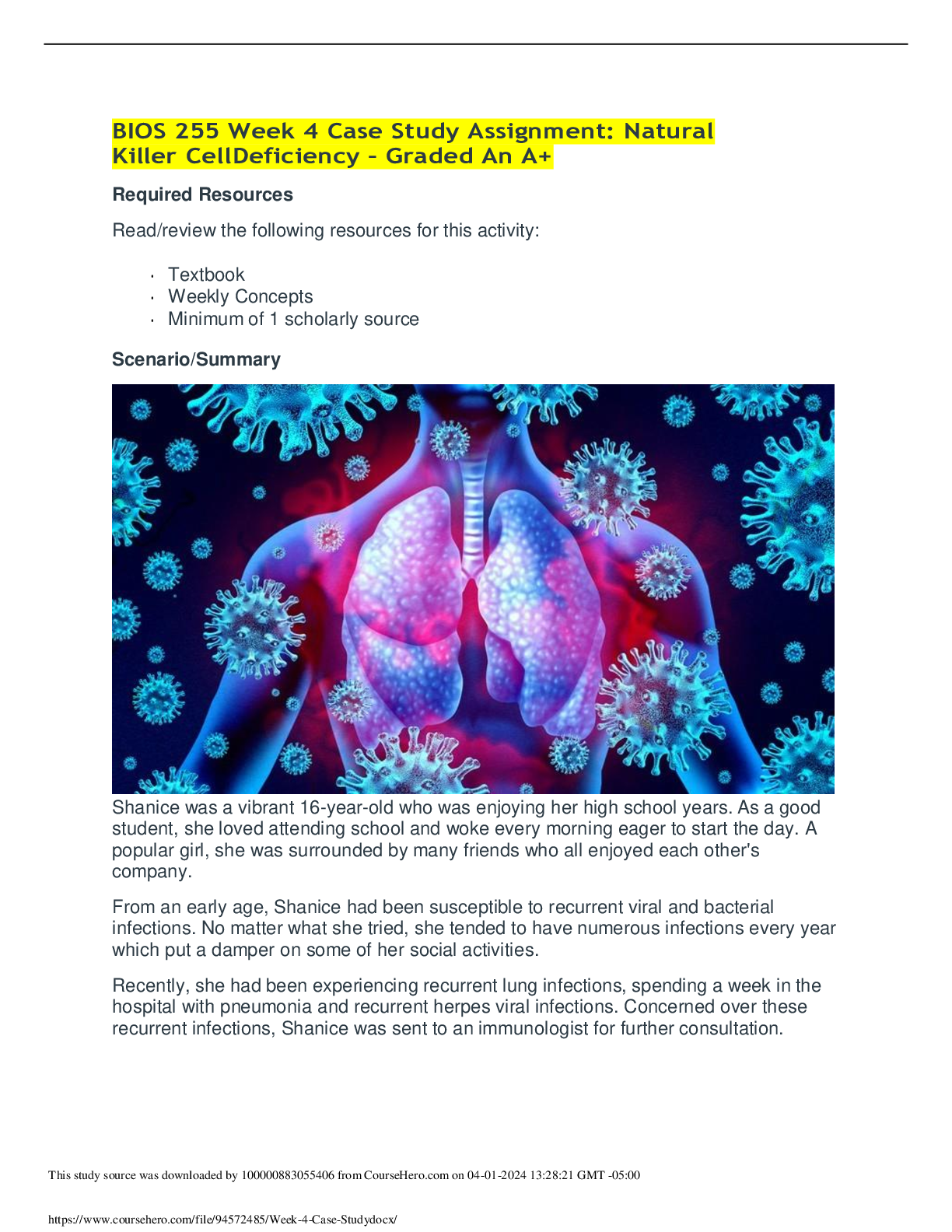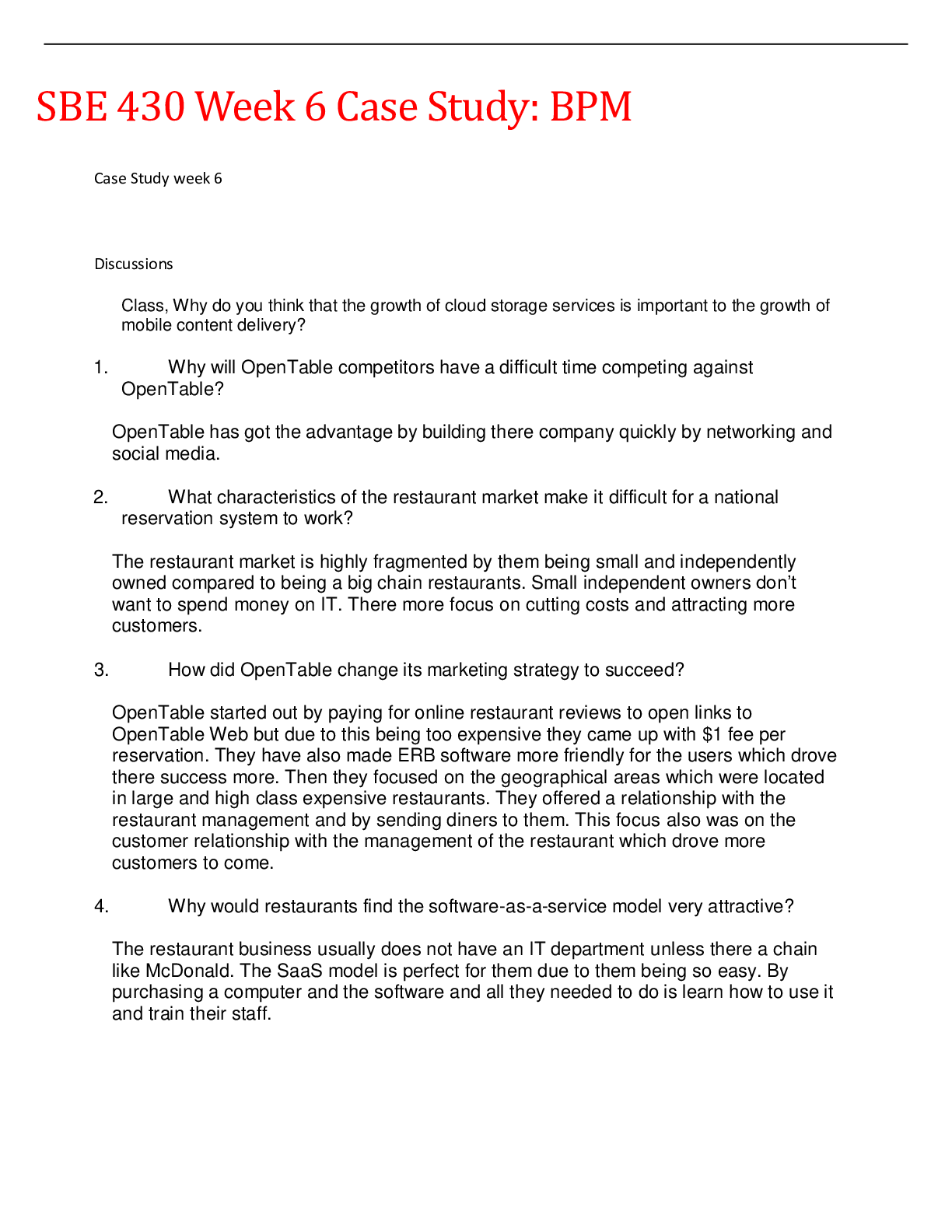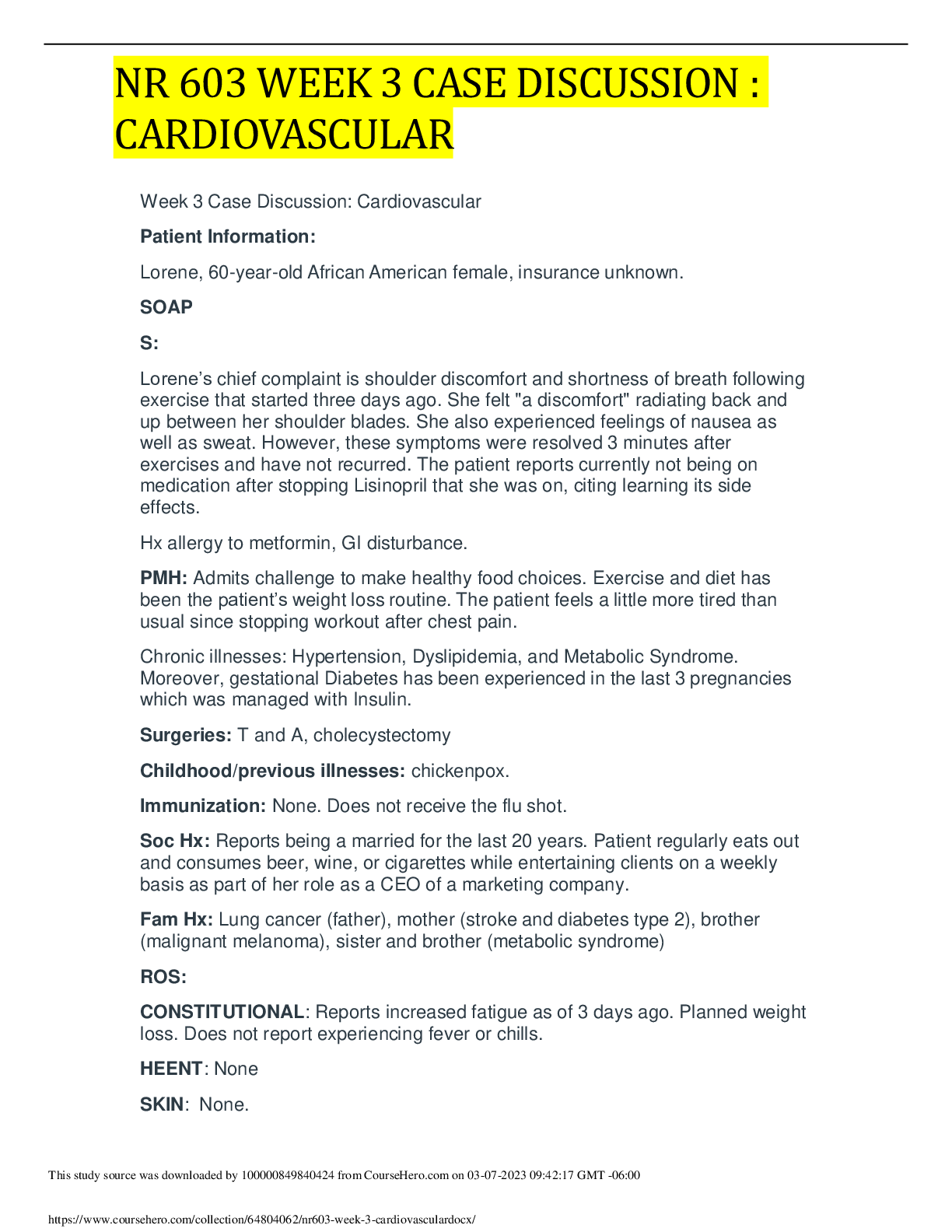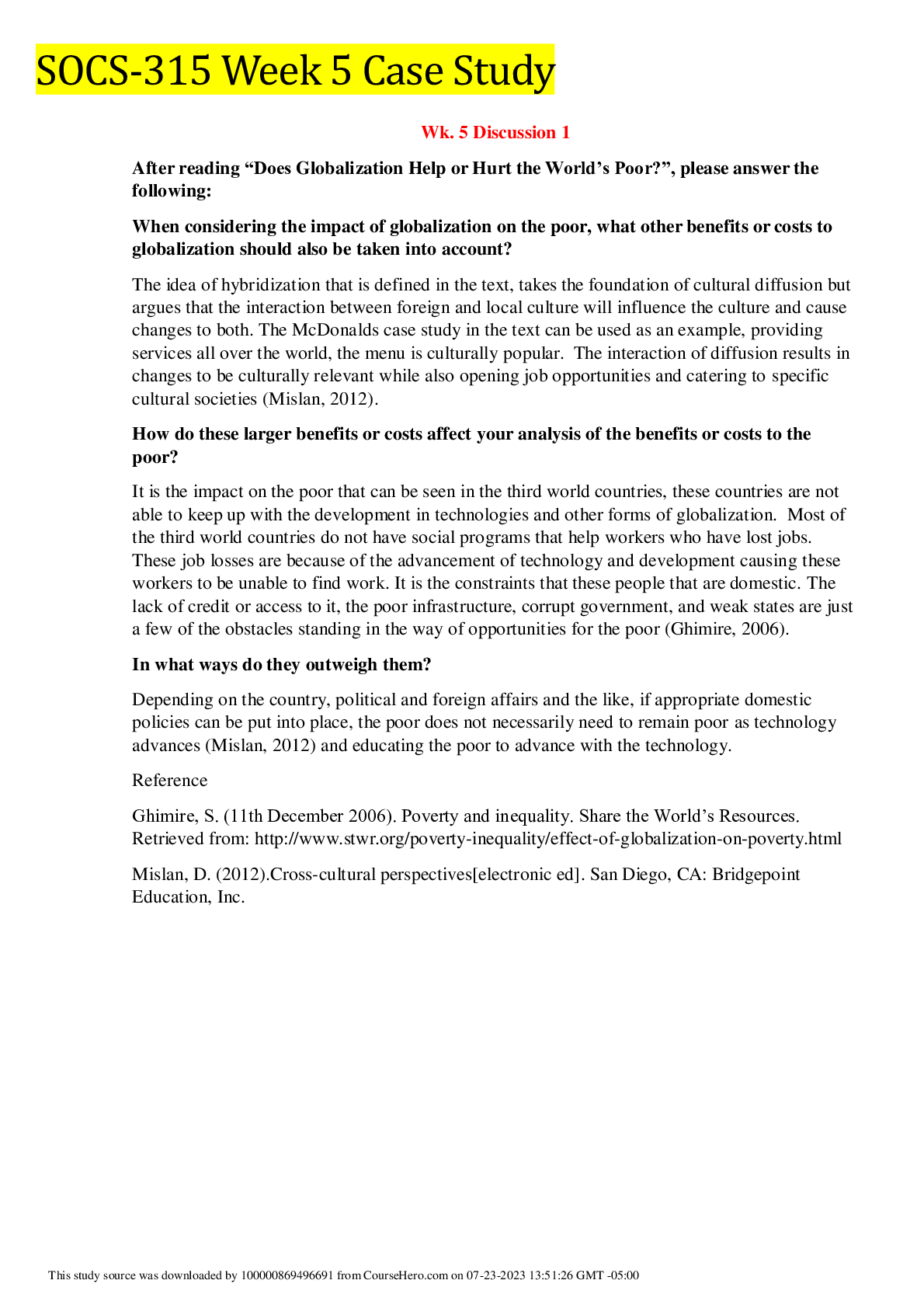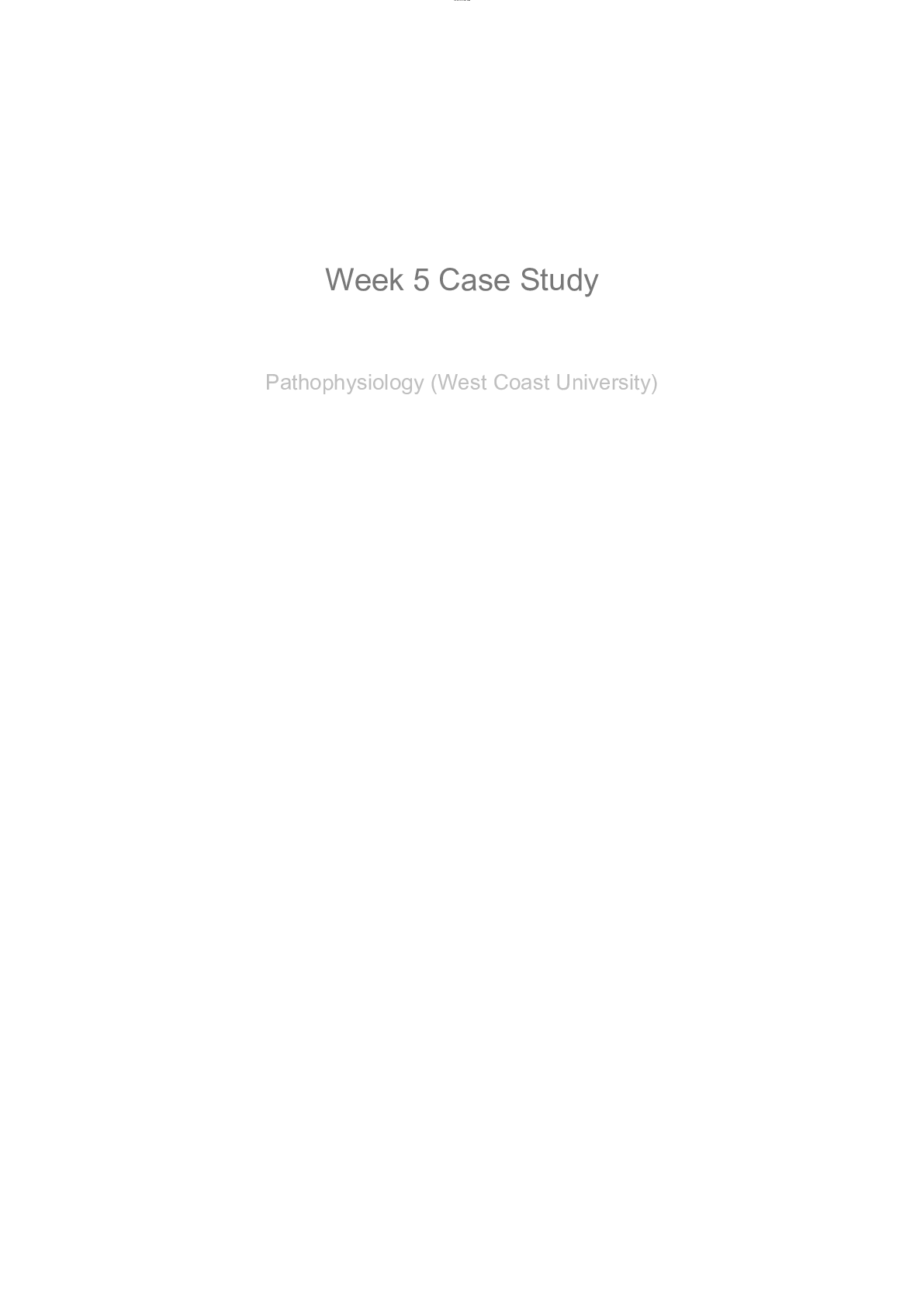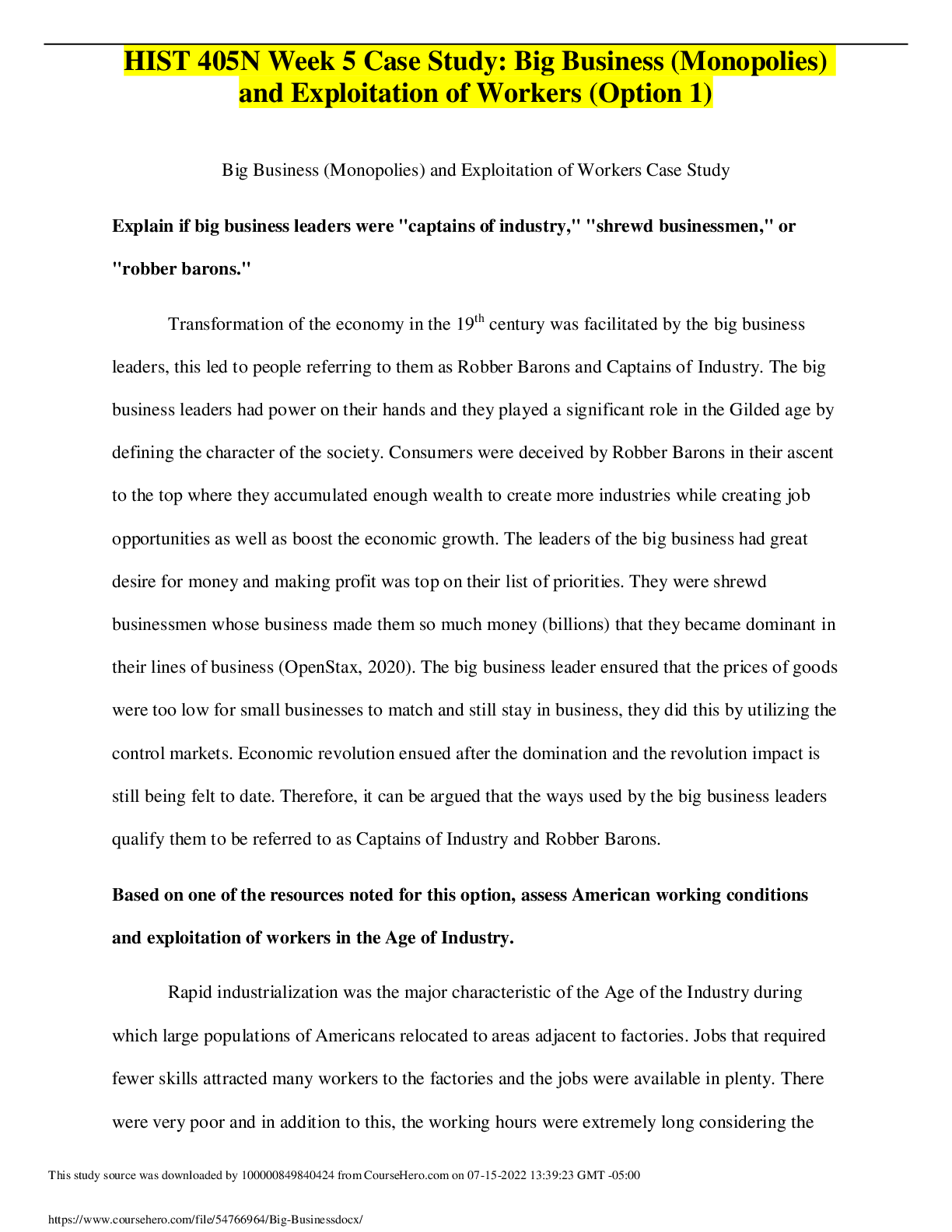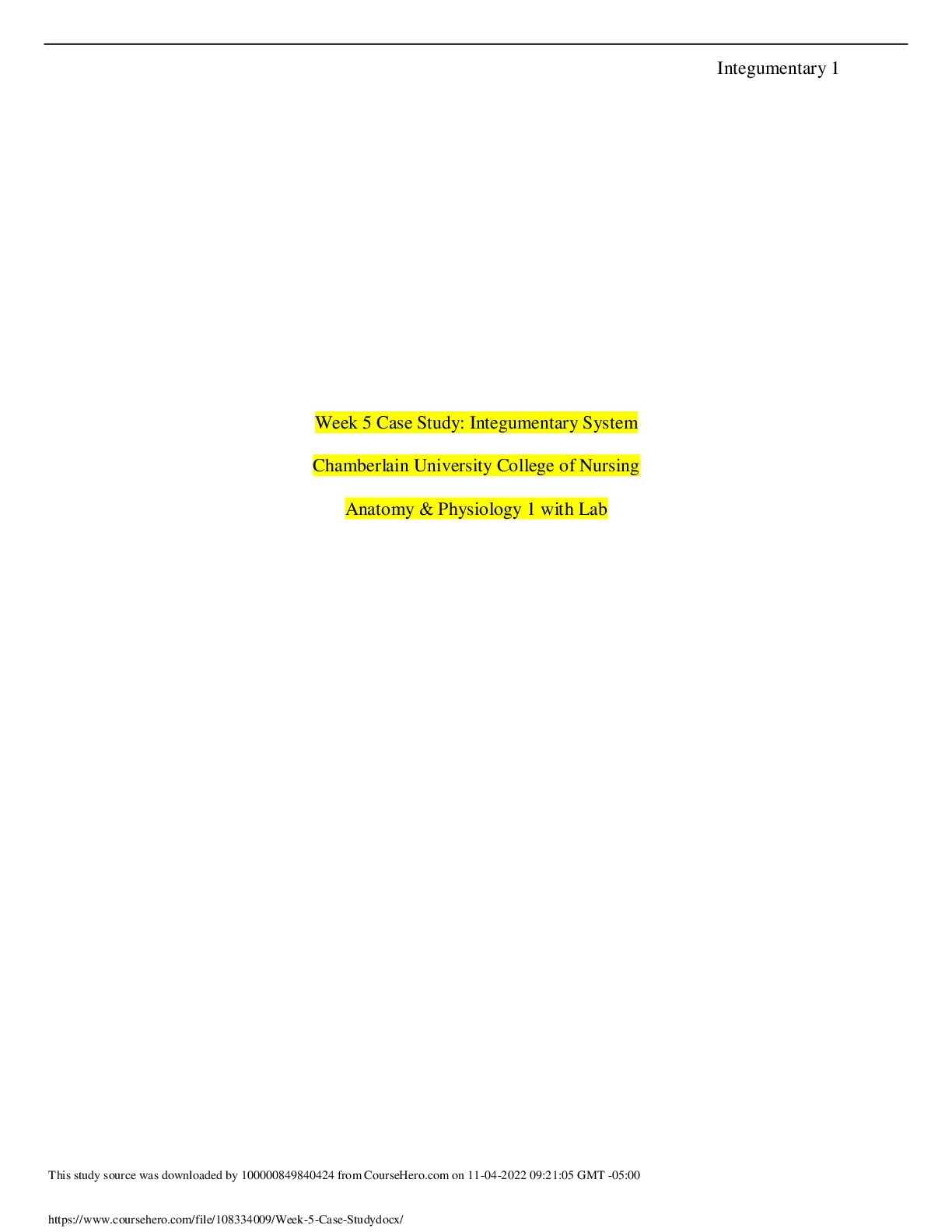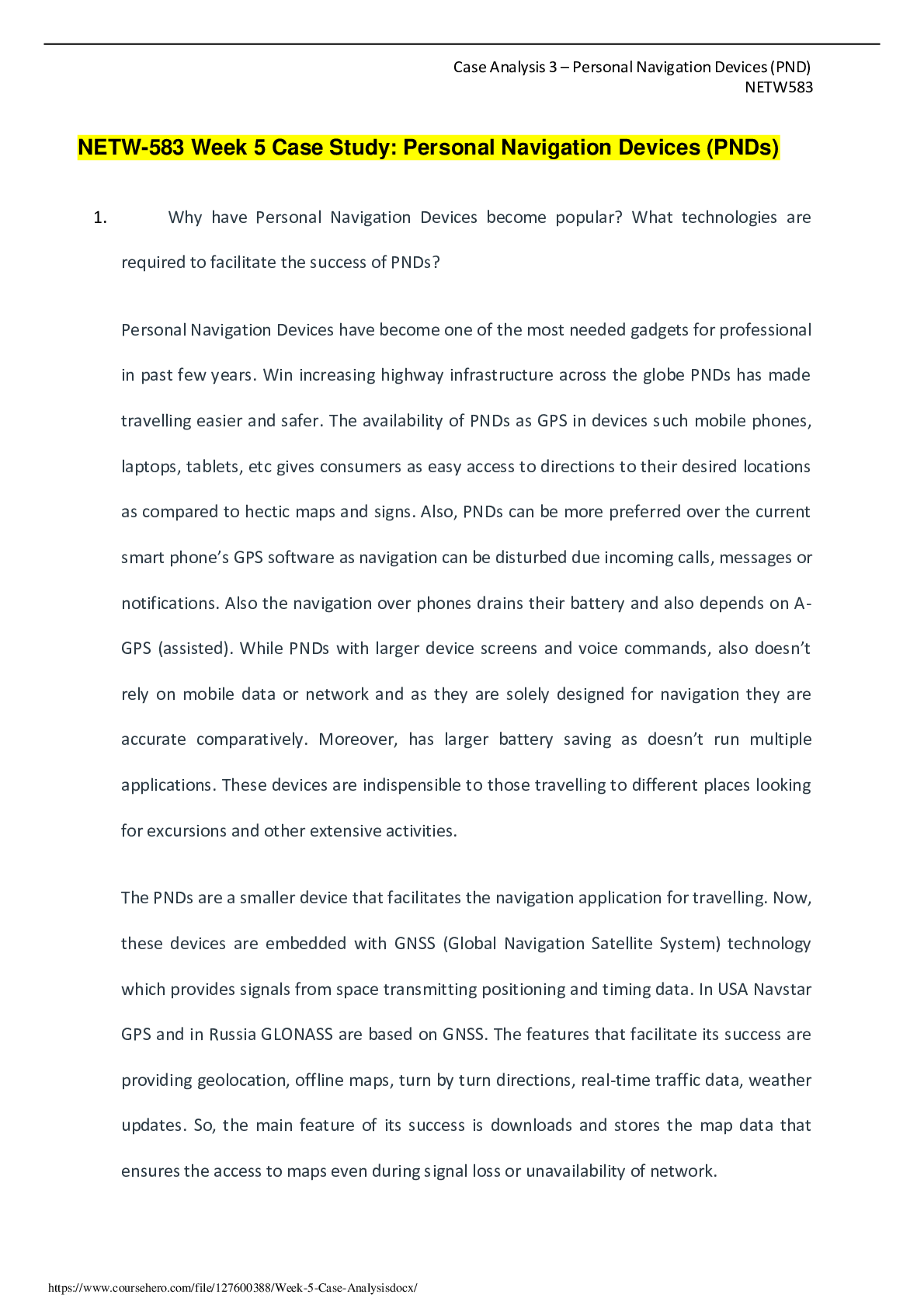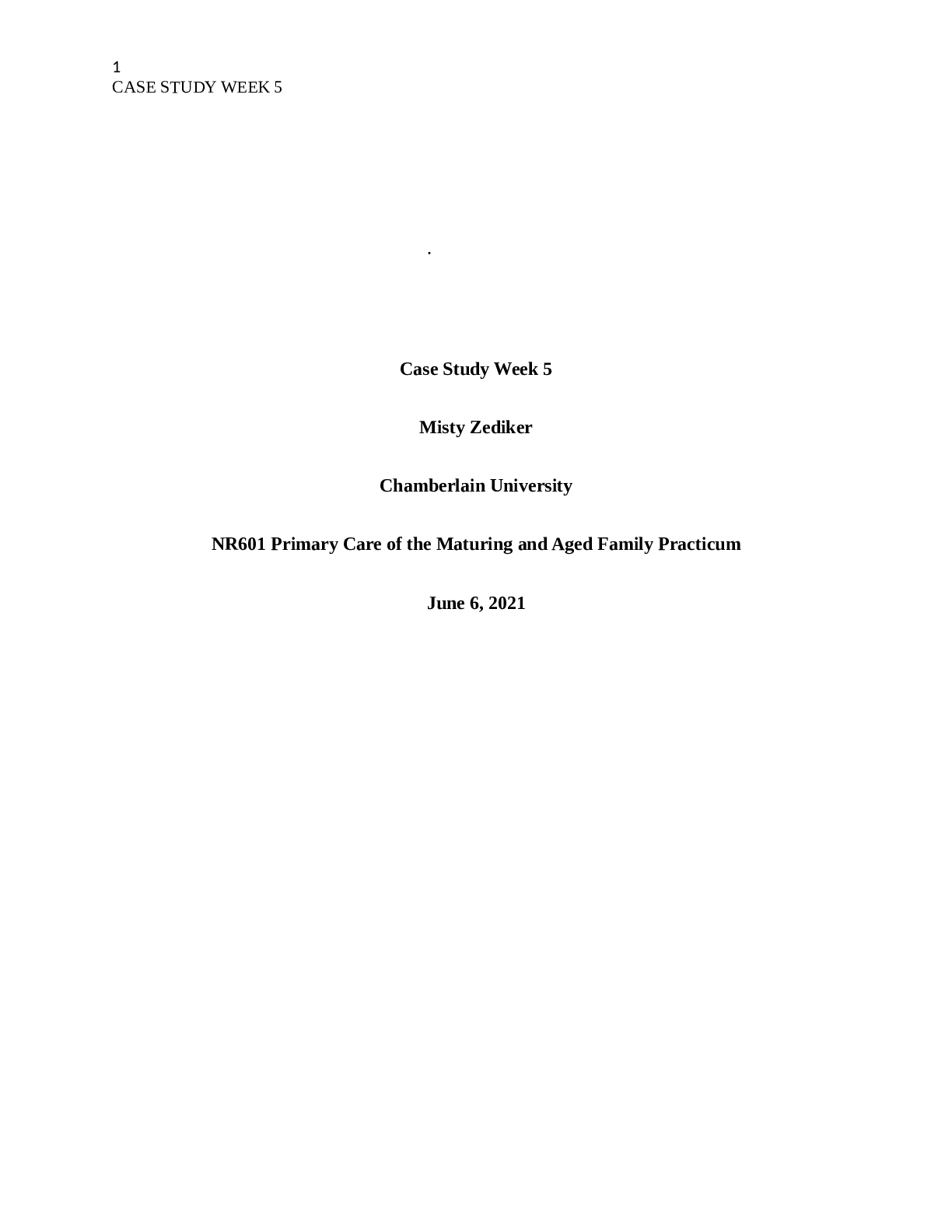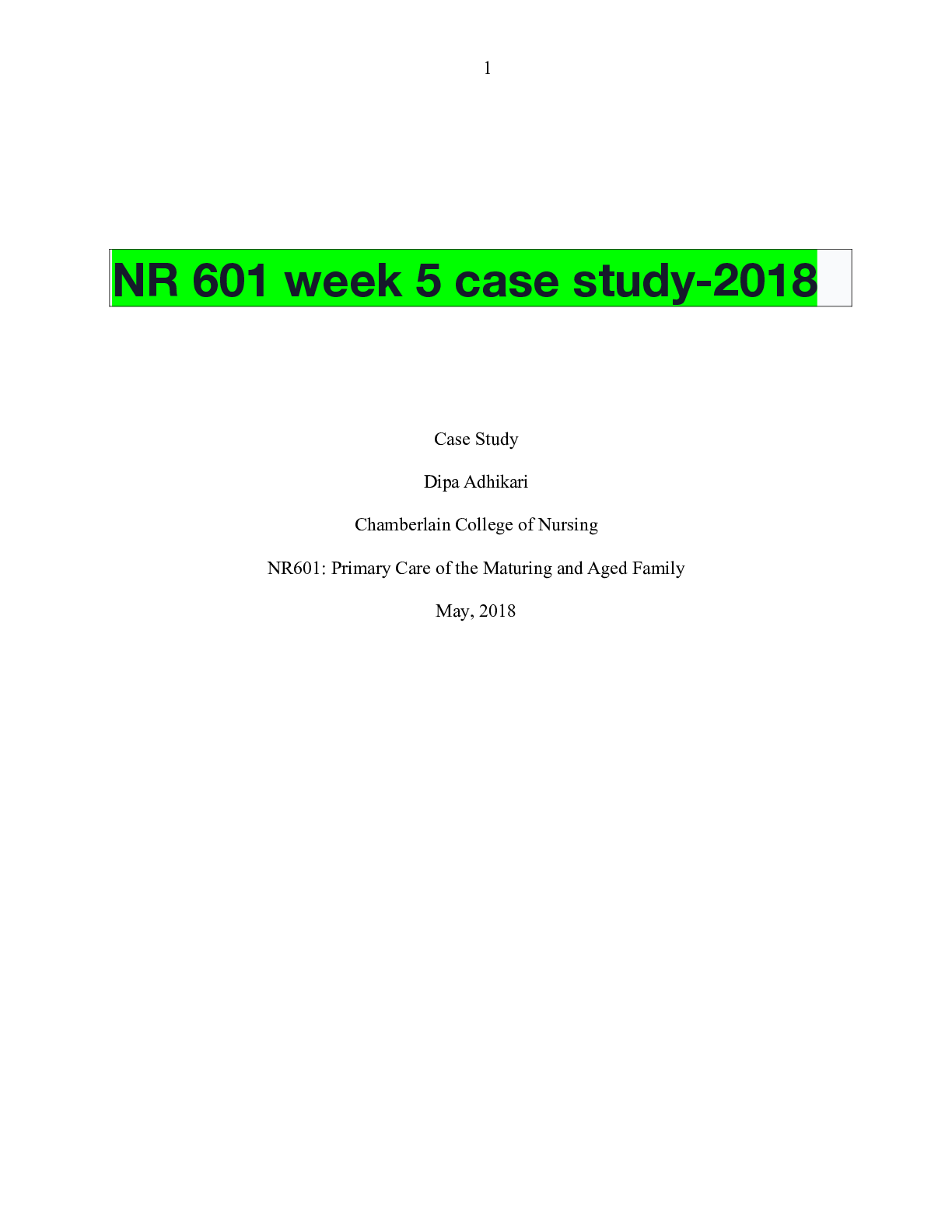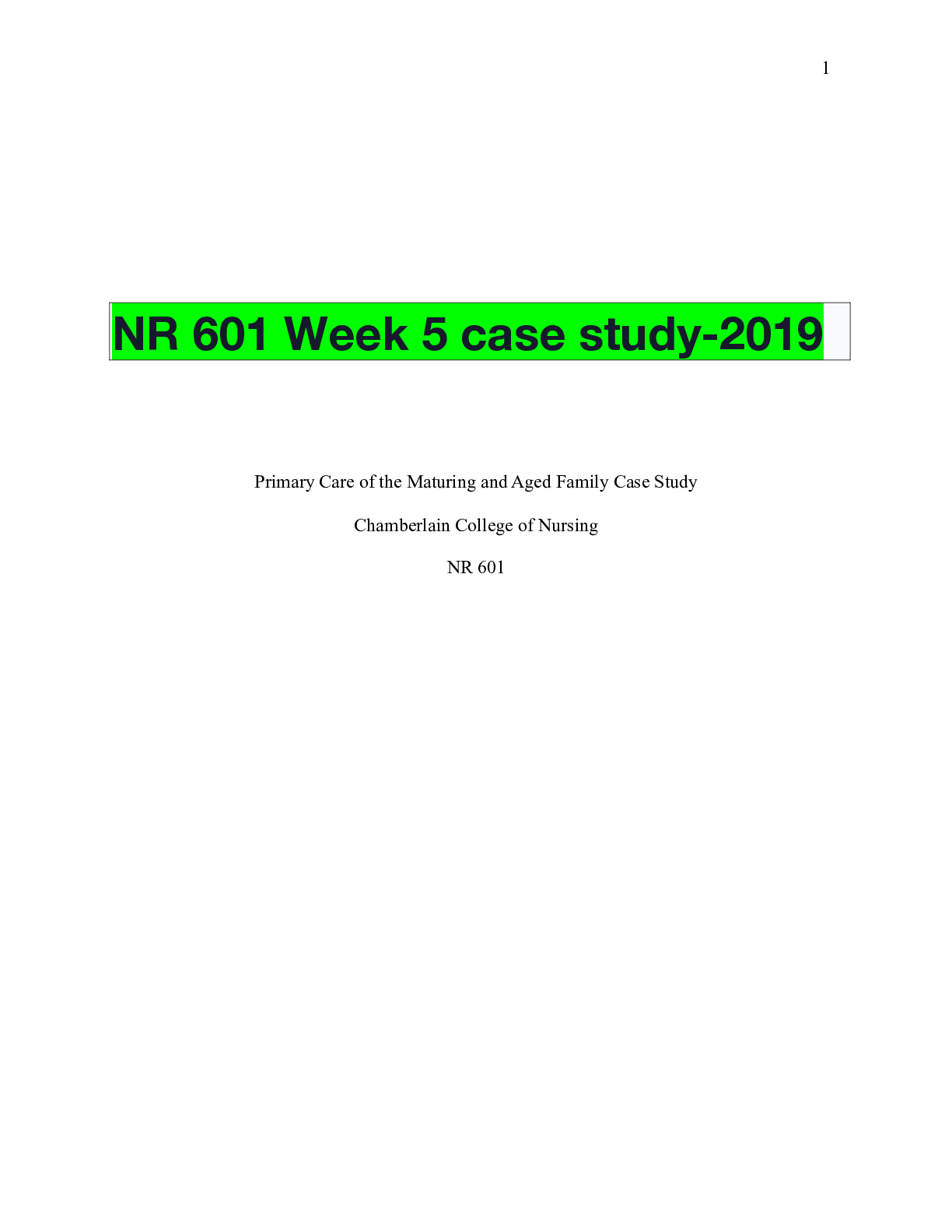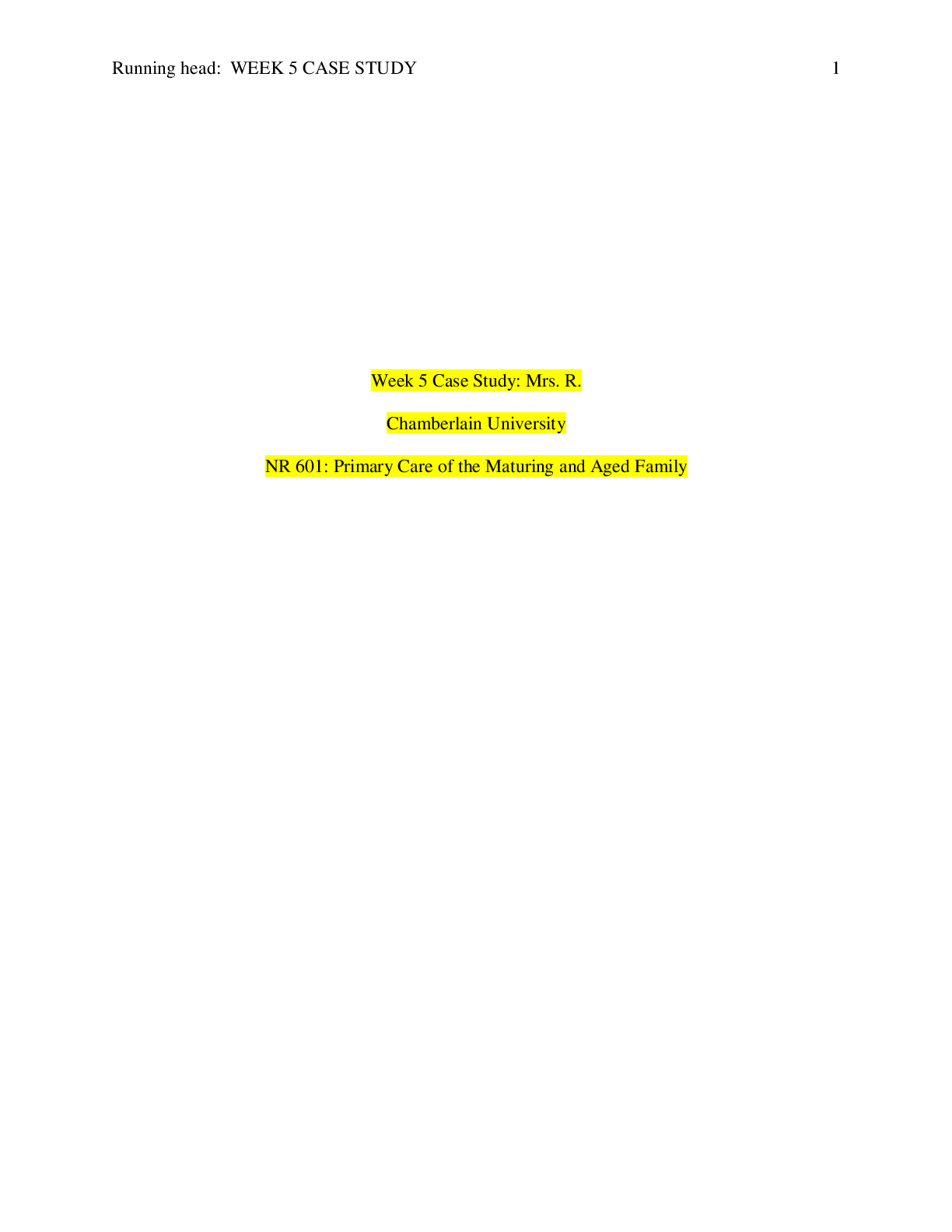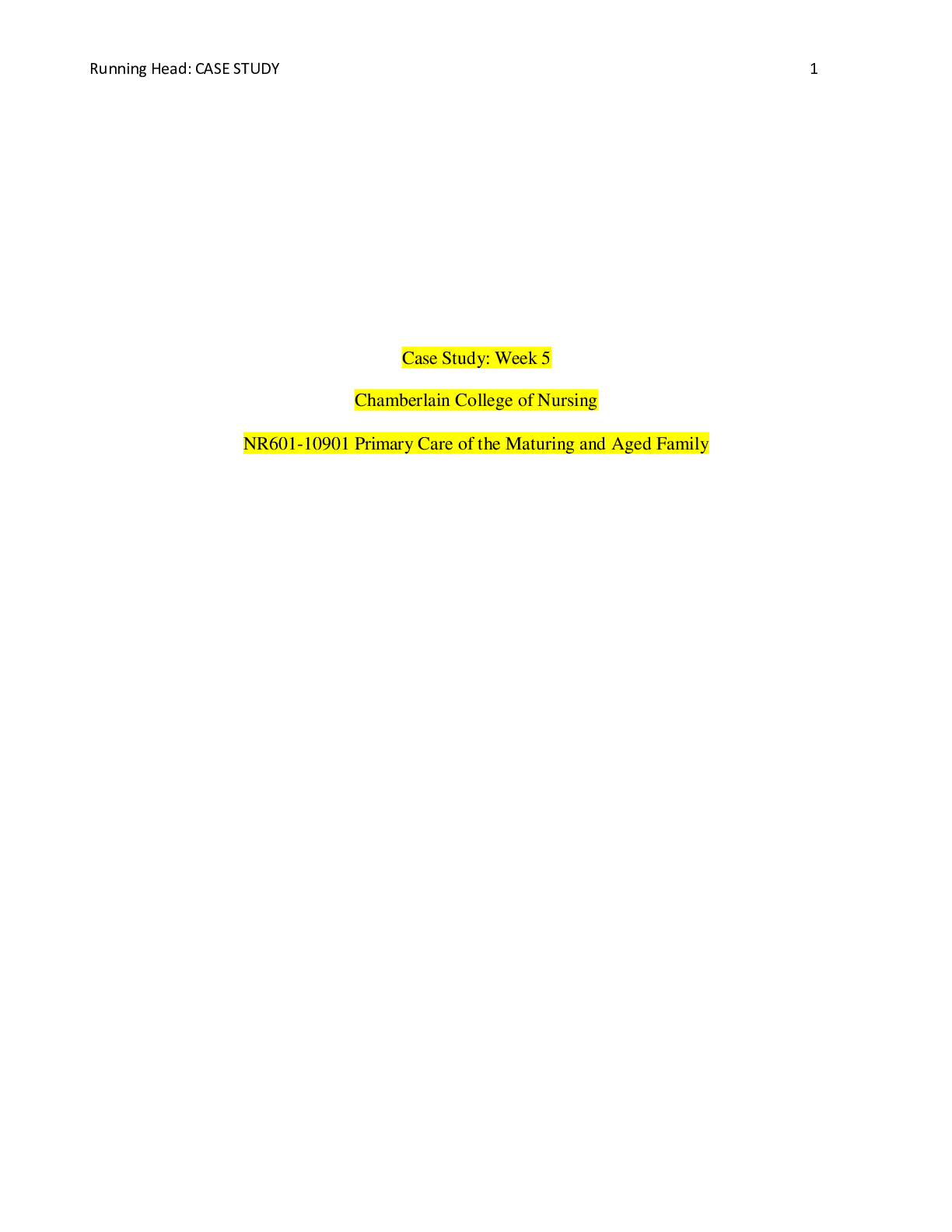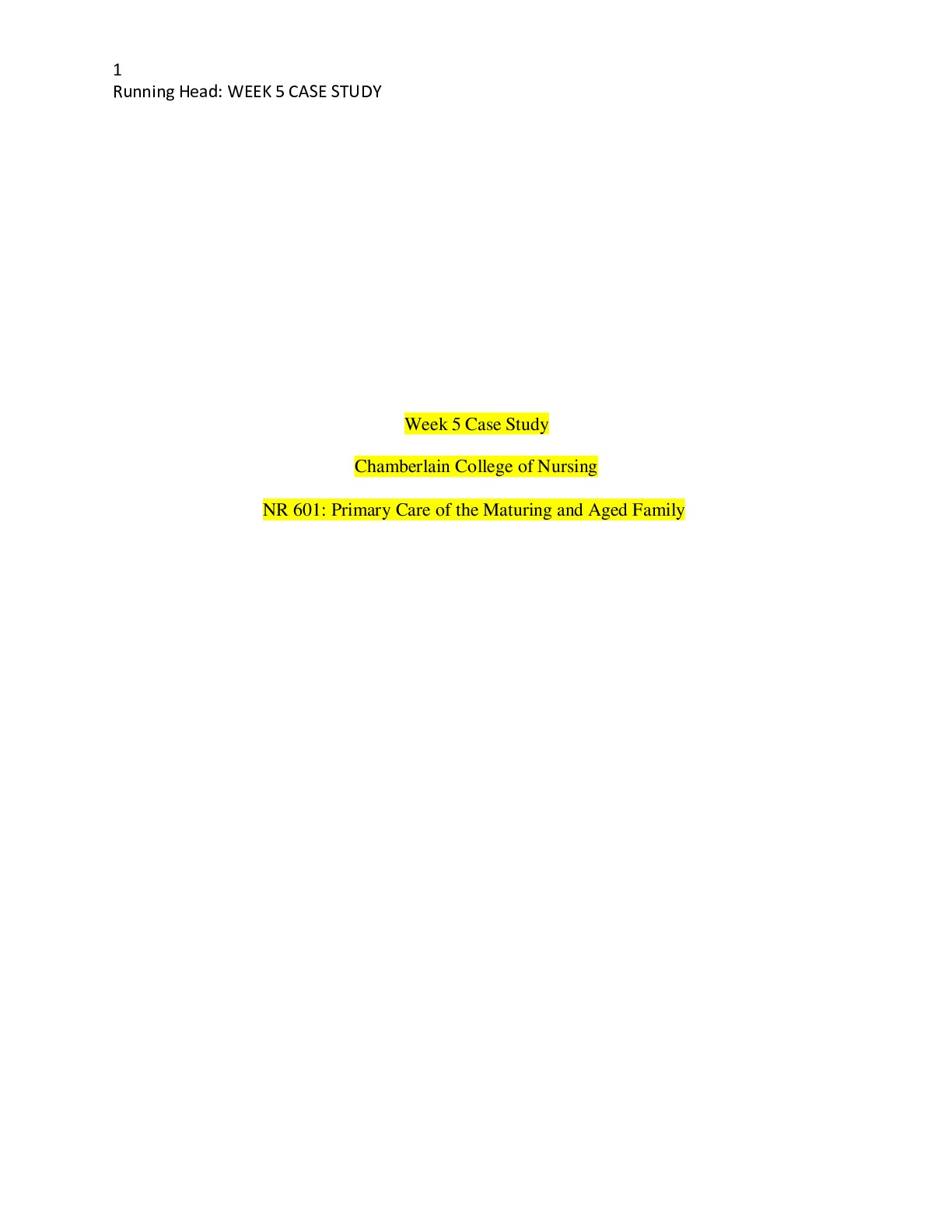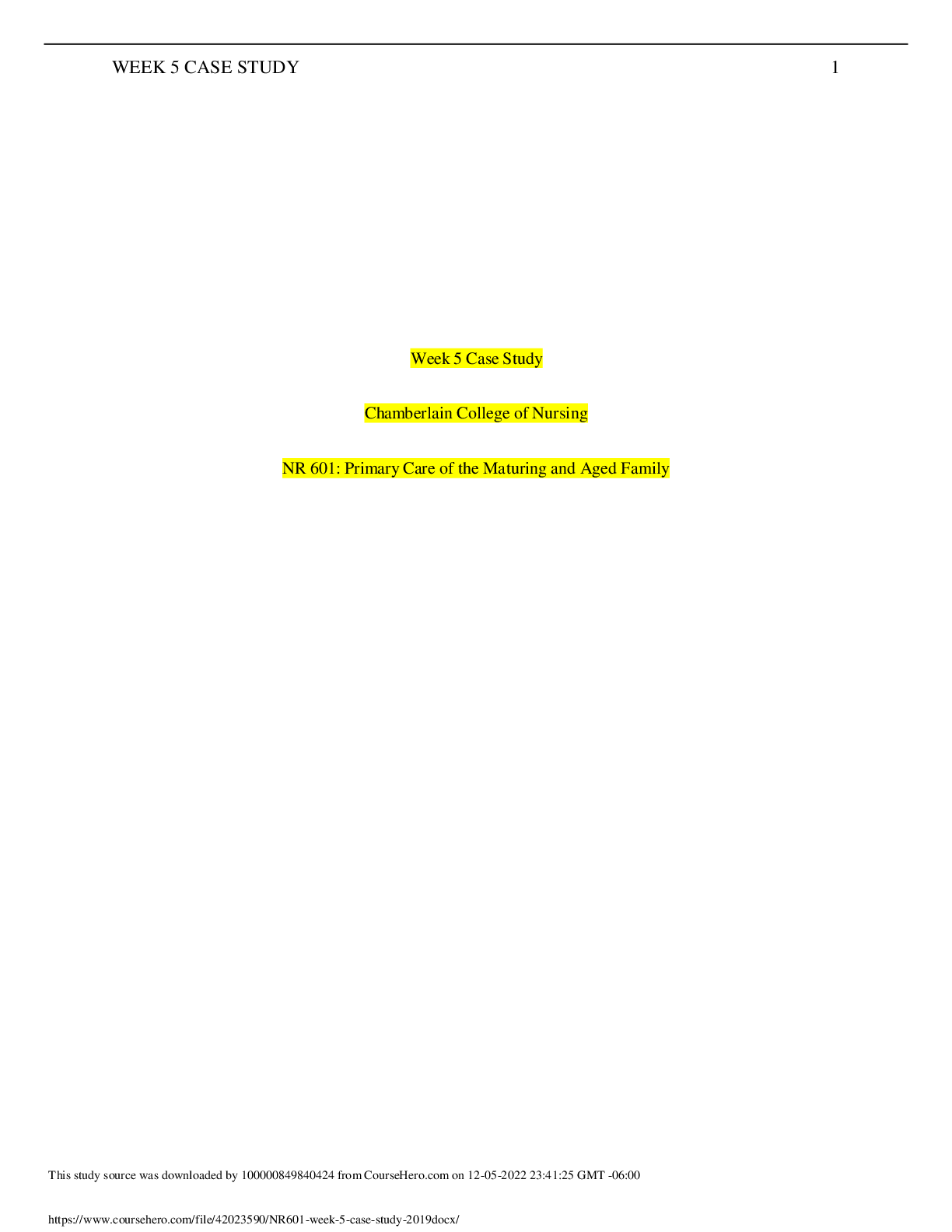*NURSING > CASE STUDY > BIOS 225 Week 5 Case Study: Hypersensitivity Reactions- Graded An A+ (All)
BIOS 225 Week 5 Case Study: Hypersensitivity Reactions- Graded An A+
Document Content and Description Below
BIOS 225 Week 5 Case Study: Hypersensitivity Reactions- Graded An A+ Required Resources Read/review the following resources for this activity: • Textbook • Weekly Concepts • Minimum of 1 ... scholarly source Scenario/Summary Manuel loved the outdoors and loved playing softball. There was no better way to spend a weekend than on the diamond hitting the ball and cooking burgers on the park grill. "Hey Jose, great game this afternoon," Manuel said to his friend. "Yep," Jose replied. "I loved how you hit the ball over that right fielder's head. I think he is still running after it." "That was a lucky hit. I couldn't do that again if I tried," said Manuel. "When is soup on? I'm getting hungry for one of your ¾ pound hamburgers with all of the fixings," asked Jose. "Soon brother, real soon," said Manuel. "Can you hand me my Coke can on the bench other there?" "Sure thing amigo," replied Jose while handing the Coke can to Manuel. "Yikes!" exclaimed Manuel after he spit out the Coke. "There was a bee in the can and it stung the roof of my mouth." Within a few minutes, Manuel developed generalized hives on his face and upper body and experienced shortness of breath and chest pains. The paramedics were called and quickly transported Manuel to the local emergency room where he was treated with epinephrine. Deliverables Answer the following questions and save your responses in a Microsoft Word document. Provide a scholarly resource to support your answers. 1. Manuel is experiencing a hypersensitivity reaction. What are hypersensitivity reactions? A hypersensitivity reaction is when the body’s immune responses are exaggerated or inappropriate for the antigen or allergen presented. (Robert Coombs and Philip Gell) Classifications of four different types of hypersensitivity reactions: Immediate (type I) , cytotoxic (type II) , immune complex-mediated (type III), Delayed Hypersensitivity (type IV). 2. Briefly describe the different types of hypersensitivity reactions. In Immediate or type I, symptoms appear within a few seconds to a few minutes after being exposed to the allergen or antigen. Cytotoxic or type II, a reaction where a noncytotoxic antibody combines with a specific antigen forming a complex which then initiates the activation of complement. Immune Complex Mediated (type III) an abnormal immune response in which the immune response is mediated by the formation of antigen-antibody complexes triggering the complement pathway. Delayed Hypersensitivity (Type IV) is the recruitment of T cells into tissues to then be activated by antigen presenting cells which then produce cytokines that then mediate inflammation. (Kalish, R. and Askenase, P.) 3. What type of hypersensitivity reaction is Manuel likely experiencing and how do you know? Manuel is likely experiencing systemic anaphylaxis because of the difficulty breathing and the chest pain. Manuel is likely experiencing edema which is caused by the leaking of blood vessels that results in fluids accumulating, then making the airways narrow. During anaphylaxis shock your immune system releases a flood of chemicals that can then cause you to go into shock causing a drop in blood pressure which then causes the air ways to be constricted/ blocked causing trouble breathing. Chest pain is a rare anaphylaxis reaction however, it can be caused by hypotension and shock, sometimes this even results in cardiac arrest. 4. Is this an antibody or T-cell mediated response? What class of antibodies or type of T-cells are involved? This is an antibody response. During this antibody response rising titer numbers of IgE antibodies sometimes with a ride in lgG antibodies. 5. Why was epinephrine administered and how does epinephrine work in this case? Epinephrine is used to prevent or decrease upper airway mucosal edema causing the swelling in the airway to go down. Epinephrine is also used to help increase blood flow through the veins by constricting blood vessels which is turn helps to bring blood pressure back up. [Show More]
Last updated: 1 month ago
Preview 1 out of 4 pages

Reviews( 0 )
Document information
Connected school, study & course
About the document
Uploaded On
Apr 09, 2024
Number of pages
4
Written in
Additional information
This document has been written for:
Uploaded
Apr 09, 2024
Downloads
0
Views
10

